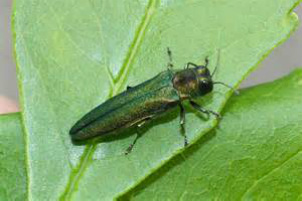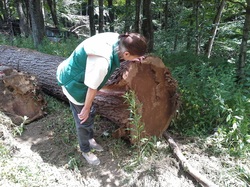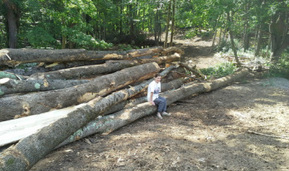We bought our property over 30 years ago. We were young and inexperienced about managing land. The previous owner told us that the land had been logged over 20 years before, and was ready for a new ‘harvest’. When we bought the property, a neighbor showed us a photograph looking down our valley from a point above our land taken in the late 1800’s.. It showed about a mile of valley that had been clear cut from peak to peak on either side, and turned into pastures, hay fields and forage for farm animals. Trees had been clear cut for tannins to cure leathers, build cities, fuel industry and there were no stands of trees.
As economies changed, dairy, beef, corn, hay, chickens, eggs, etc. began to reshape the view from this vantage point atop the valley, into the pockets of woods and brush and mowed fields that we found when we first came into the valley.
In the last few decades, as the local economies continued to change, the brushy lots and untended pastures and hay fields have slowly turned into woodlots with beautiful trees, that we did not notice as they slowly emerged. Our decision to log our land again, made us look back at old pictures and appreciate all the changes to the valley as the years have passed by, under our noses and unperceived.

It all began with a lilac colored box in a tree, which I noticed on my way home from buying groceries. The County put them out to see whether the Emerald Ash Borer (EAB)- an invasive species of beetle from Asia, had arrived. The DEC (Department of Environmental Conservation) told us that the EAB is in every County around us, so the odds are, it is here already. The EAB attacks ash trees, boring into them and disrupting their water uptake, eventually killing them. As we have a large percentage of ashes, this was alarming. So we hired professional loggers to have a look at our woods. They told us that our ashes might still be okay but it was time to ‘harvest’ them before it is too late. The DEC concurred.
And so the logging adventure began! I do not exaggerate, it was quite an adventure.
Three men arrived on a Saturday morning and walked through the woods marking the trees they wanted to take. The trees had to be 18 inches (~ ½ meter) in diameter at chest height. This gave us the opportunity to check the marked trees and to decide whether there were trees among them we wanted to keep because they had a special meaning to us.
They did not only mark ashes, but also other trees, like beech, maple, cherry, and bass. We do not have a lot of pine trees. There were also a few trees marked with a red “X”. These trees had to be cut because they could fall down and destroy healthy trees.

For us it was important that our trees would go on ‘living’ as furniture or as homes, baseball bats, tool handles etc. and not only for firewood. That thought appealed to us. Almost all of our renewable harvest was hardwoods, e.g.- cherry, maple, ash, etc.
There was other firewood created as well. What I call ‘casualty tees’ (unavoidable victims of larger trees being felled) and old tress which were dangerously in decline.
For us, it wasn't only about the money we would receive for our trees. A properly managed forest can increase the wildlife diversity, keep the trees healthy and varied and increase new growth.
Of course, the adventure of it all, with all the huge equipment and the all the decisions we would have to make about the placement of roads, the harvest, etc, made it all a lot of fun!

Our next installment as a webpage post, will begin the logging process. Stay tuned!

 RSS Feed
RSS Feed